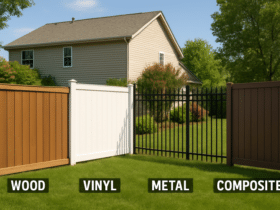Table of Contents
- Introduction
- Benefits of Tiny House Living
- Designing Your Tiny Home
- Navigating Zoning Laws and Regulations
- Financial Considerations
- Sustainable Living Practices
- Joining Tiny House Communities
- Overcoming Challenges
Introduction
As urban living becomes increasingly expensive and unsustainable, a growing number of individuals and families are turning to alternative housing solutions that offer greater financial freedom, flexibility, and an environmentally conscious lifestyle. Among these alternatives, tiny house living has experienced a tremendous surge in popularity, capturing the imagination of people who crave simplicity without sacrificing comfort. Driven by the desire to live more intentionally and purposefully, tiny house enthusiasts are often inspired by how upscale urban residences such as Uptown Chicago luxury apartments maximize limited space with smart design and community amenities. Whether seeking to escape the cycle of rising rent or to find affordable standalone housing, many urbanites are now considering tiny homes as a viable, sustainable option. This guide is designed to walk you through the essentials of tiny house living, supplying actionable advice and outlining crucial considerations for anyone contemplating this transformative way of life, whether you’re still in the dreaming phase or ready to leap.
Embracing tiny house living is not merely about making sacrifices or giving up the comforts of modern life. Instead, it’s about intentional choices—consciously deciding what possessions and experiences bring true value, and making the most of every available square foot. By paring down on material things, many people discover a richer life focused on relationships, well-being, and personal growth. The benefits of tiny living range widely: from dramatically reduced housing costs and minimal maintenance to a much smaller environmental footprint and newfound flexibility. If you’re curious about this minimalist lifestyle and eager to learn more about its practicalities and rewards, read on for a thorough and inviting deep dive into the world of tiny house living.
Benefits of Tiny House Living
Making the move to a tiny house delivers compelling and multifaceted advantages for a broad range of people. Affordability is a primary draw—tiny homes are far less expensive than traditional houses, not only initially but also in terms of day-to-day expenses such as utilities, taxes, and insurance. For many, this lower financial burden translates into the freedom to work less, travel more, or simply save for other priorities like education or retirement. Maintenance is significantly reduced: smaller homes require fewer repairs, less cleaning, and far less time spent on chores, freeing up precious hours to pursue hobbies, spend time with family, or simply relax. With homes typically averaging under 400 square feet, the environmental impact is drastically lessened. Heating, cooling, and powering a tiny home require fewer resources, which means lower energy consumption and a reduced carbon footprint. Materials and furnishings are chosen carefully, reducing waste. Lastly, the freedom and flexibility of a mobile or easily relocatable tiny house allow you to change scenery without the logistical headaches of uprooting an entire household. Whether you opt for a stationary foundation or a home on wheels, tiny living grants a level of autonomy that is nearly impossible to match in conventional housing.
Designing Your Tiny Home
Thoughtful design is crucial to transforming limited square footage into an inviting, efficient, and highly functional home. Successful tiny houses integrate multi-functional furniture as a fundamental ingredient—for example, convertible Murphy beds that fold into the wall, transforming bedrooms into daytime workspaces or entertaining areas; foldaway dining tables that double as desks; or benches and stairs with built-in storage underneath. These solutions allow inhabitants to comfortably fit essential activities, from sleeping to dining to remote work, into a small area. Making use of vertical space is equally important. Lofted sleeping quarters, wall-mounted shelves that run up to the ceiling, pegboards, and hanging racks all help minimize clutter and maximize usability without expanding a home’s footprint. Incorporating natural light also makes a tremendous difference: large windows, glass doors, and skylights create a sense of spaciousness and bring the outdoors in, reducing feelings of confinement and boosting mood. Creative space-saving touches, such as sliding barn doors instead of swinging doors, compact appliances, and collapsible tables or counters, further contribute to an adaptable and welcoming home environment. Ultimately, good tiny house design is highly personal; it centers on your routines, priorities, and style, and rewards careful planning with everyday comfort.
Navigating Zoning Laws and Regulations
Tiny homes are not always welcomed within conventional municipal codes and land use regulations. Each locality, municipality, or state has its own zoning laws and building regulations;. At the same time, some areas are progressive and encourage experiments in small space living, others remain highly restrictive, limiting tiny house placement, minimum square footage, and permitted utilities. Before you invest significant time or money, it’s essential to research the legal landscape in your preferred area. Determine if your tiny house will be categorized as an accessory dwelling unit (ADU), a mobile home, or some other designation. Certain regions are creating new ordinances or pilot projects that specifically accommodate tiny homes, particularly as solutions to high housing costs and homelessness. Connecting with local planning agencies and seeking advice from tiny house advocacy groups can help you understand your rights and responsibilities, smooth the permitting process, and ensure you remain in compliance with all building codes and health and safety standards.
Financial Considerations
One of the most significant incentives for tiny house living is the opportunity for substantial cost savings, but prospective owners must budget carefully to avoid surprises. Initial costs of a tiny home vary widely, with DIY builds using reclaimed materials coming in at the low end, and custom professional builds, outfitted with premium appliances or finishes, commanding higher prices—usually anywhere from $20,000 to $100,000, though some luxury models may exceed this. Additional expenses, such as land purchase or rental, site preparation, and utility hookups, can add considerably to the total investment. Securing financing options can be tricky because tiny homes do not always qualify as conventional real estate. As a result, many lenders treat them as recreational vehicles, leading buyers to rely on personal loans, lines of credit, RV loans, or even crowdfunding to obtain funding. Insurance can also pose unique challenges; while traditional homeowner’s policies may not apply, specialized tiny house or RV insurance providers can help you protect your investment and property. Proper planning and honest assessment of all costs—including recurring expenses and a pad for contingencies—are crucial for ensuring that the dream of tiny house living truly remains affordable and sustainable.
Sustainable Living Practices
Tiny house living naturally leads to a more sustainable, lighter environmental footprint. One major benefit is the ability to incorporate green technologies affordably. Solar power systems are increasingly accessible for small dwellings, providing off-grid electricity, reducing utility bills, and ensuring energy independence. Many tiny house owners take pride in minimizing their reliance on municipal water and sewer systems; composting toilets dramatically reduce water use, convert waste into usable compost, and can be installed with relatively little infrastructure. Rainwater collection systems—like rooftop barrels and filtration systems—help maximize water self-sufficiency, especially important in rural settings. Many residents use energy-efficient appliances, LED lighting, and eco-friendly building materials to further reduce their impact. Living tiny often fosters a minimalist approach to consumption, encouraging thoughtful purchasing, responsible waste management, and a more harmonious relationship with the environment.

Joining Tiny House Communities
Tiny home dwellers often discover that they thrive in intentionally designed communities, which provide social connection, shared resources, and spaces for collaboration. These tiny house communities can be found nationwide and frequently host classes, workshops, festivals, and neighborhood projects. Residents swap skills, share tools, and sometimes pool resources for amenities like communal gardens, craft rooms, or laundry facilities. This spirit of cooperation fosters a genuine sense of belonging and mutual support—qualities sometimes lacking in traditional neighborhoods. Living in a tiny house community can help ease the potential isolation of living small, creating a balanced blend of privacy and shared purpose while offering friendship, inspiration, and practical support every step of the way.
Overcoming Challenges
Transitioning to tiny house living, while rewarding, comes with its own set of challenges and adjustments. Downsizing belonging can evoke strong emotions, as it may involve letting go of sentimental possessions and learning to live with less. Organization is vital—every item must earn its place, and regular decluttering quickly becomes a habit. Tiny living means getting creative about storage and using clever solutions to avoid feeling cramped. Another hurdle can be legal: not every property is zoned for small homes, and setting up utilities or passing inspections can require patience and careful navigation. Weather, especially in extreme climates, also influences material choices and design. Ultimately, the journey involves mindfulness, an openness to change, and a willingness to embrace new ways of living, all of which are worthwhile in pursuit of a lifestyle that aligns closely with your values and priorities.







